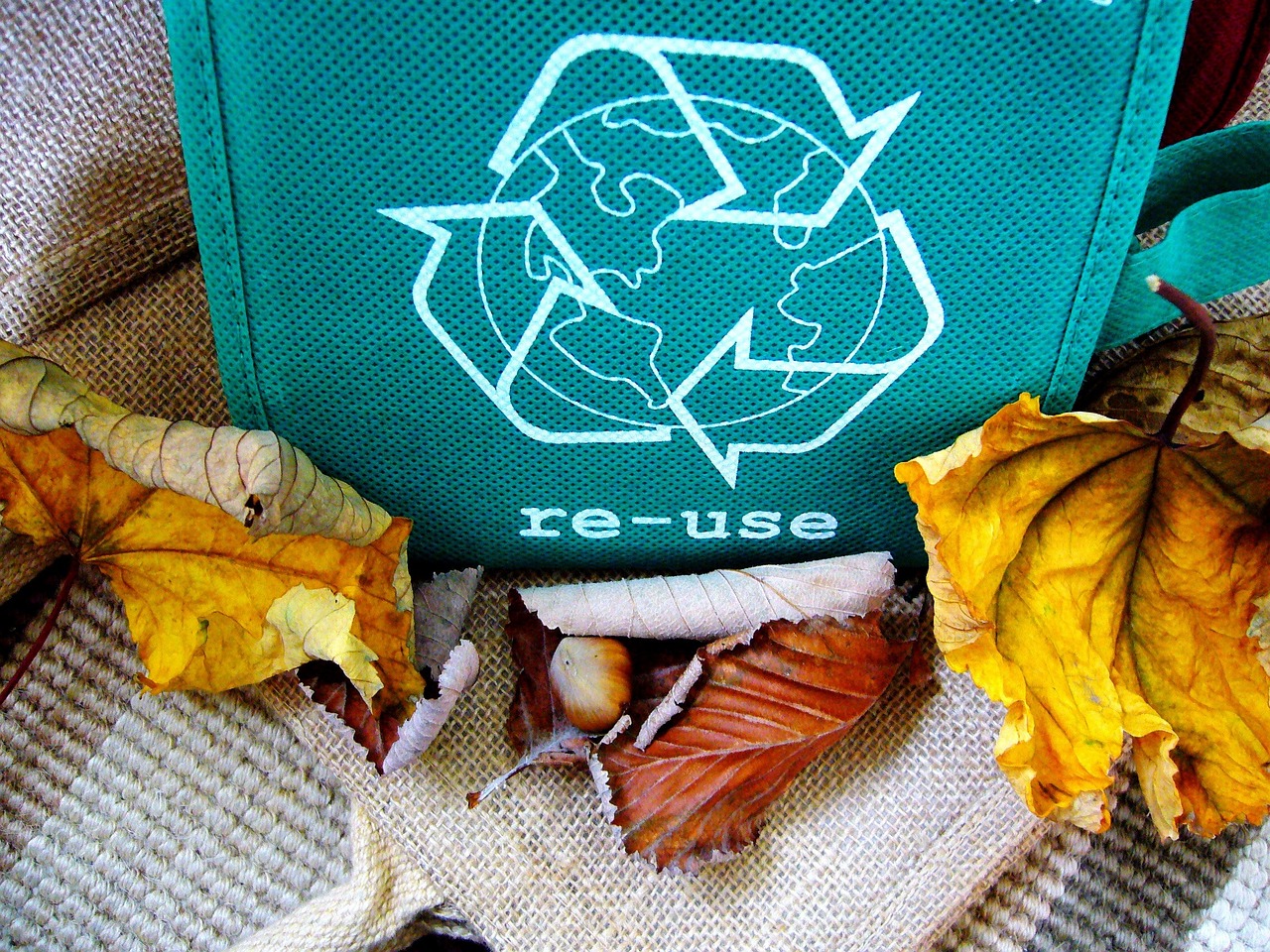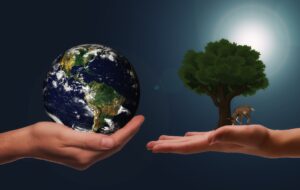Facts About Recycling: Introduction
Do you ever wonder what happens when you discard that soda can or scrap of paper? Or what about the old cell phone that’s been collecting dust in your drawer? It’s easy to overlook these questions in the hustle and bustle of our daily lives. Still, the facts about recycling can lead us down a fascinating rabbit hole of facts about recycling that are not just surprising, but potentially life-altering.
Recycling, in simple terms, is the process of converting waste into reusable materials. But in reality, it’s an intricate, expansive network of processes, materials, and impacts, many of which are hidden from our everyday awareness. This article aims to pull back the curtain on the world of recycling and illuminate some of its most surprising corners.
Fact 1: Recycling Rate of Different Materials
While we’d all like to believe that our recyclable waste is being efficiently turned into something new, the truth is that recycling rates vary significantly between materials. For example, in the U.S., more than 66% of paper gets recycled, a fairly impressive figure considering our paper-heavy lifestyles.
On the other hand, plastic tells a different story. Despite being one of the most pervasive materials in our society, only around 8% of plastic gets recycled. The remaining majority ends up in landfills, oceans, and even in our bodies as microplastics. The fact that such a ubiquitous material is so poorly recycled is shocking and underscores the importance of reducing plastic use and improving recycling programs.
Fact 2: Recycling and Energy Consumption
You might think that recycling is primarily about reducing waste, and you’d be right. But there’s another massive benefit of recycling that’s often overlooked: energy conservation. Here’s a staggering fact: recycling an aluminum can save enough energy to power your TV for 3 hours! That’s a significant amount of energy conserved for just one can, imagine multiplying that by millions of cans recycled each day.
Fact 3: The Lifespan of Recyclable Items
Recyclable items can have surprising lifespans. Take glass, for example. Unlike plastic, which can lose its integrity after being recycled, glass can be recycled indefinitely without loss of quality or purity. This means that the glass bottle you’re recycling today could have been around for hundreds of years in various forms, and might still exist hundreds of years in the future! It’s a testament to the incredible potential of recycling when implemented effectively.
Fact 4: The Myth of Biodegradable Items
The term “biodegradable” often garners a lot of positive attention, suggesting a product that breaks down naturally over time. But the truth is not that simple. In the oxygen-deprived environments of modern landfills, these items can’t decompose as intended. Instead, they produce methane, a potent greenhouse gas that contributes to global warming. So, while it might feel good to choose biodegradable items, they are not a silver bullet for waste issues and have their own environmental impacts.
Fact 5: Electronic Waste Recycling
As technology continues to rapidly advance, we find ourselves cycling through electronic devices with increasing frequency. This leads to a burgeoning problem of electronic waste, or e-waste. Here’s a sobering fact: only 12.5% of e-waste is currently recycled. Given the precious metals and hazardous substances found in these items, proper e-waste recycling has huge potential benefits, from resource recovery to environmental protection.
Fact 6: The Global Impact of Recycling
It’s easy to think of recycling as a local activity with local benefits, but its impact is truly global. Consider this: if we recycled half the world’s paper, we could avoid the harvesting of 20 million acres of forestland. That’s an area twice the size of Belgium! This not only preserves natural habitats but also helps mitigate climate change, as those trees can continue absorbing carbon dioxide from the atmosphere.
Fact 7: The Economy of Recycling
The economic impact of recycling is often overlooked, but it’s significant. In the U.S., the recycling industry is estimated to be worth around $200 billion. It provides more than a million jobs and plays a crucial role in the circular economy. This dispels the notion that economic growth and environmental sustainability are mutually exclusive.
Fact 8: Misconceptions about Plastic Recycling
The world of plastic recycling is rife with misconceptions. Not all plastics are created equal; some, like PET (Polyethylene terephthalate) and HDPE (High-density polyethylene), are commonly recycled, while others, like PVC (Polyvinyl chloride), are rarely, if ever, recycled due to the challenges and risks associated with their processing. It underscores the importance of understanding and properly following local recycling guidelines.
Fact 9: The Recycling Journey of a Glass Bottle
A glass bottle’s recycling journey is quite fascinating. Once it’s discarded and ends up in the recycling bin, it embarks on a journey that could see it return to a store shelf as a new bottle within as little as 30 days. This process includes collection, sorting, crushing, melting, and reforming, and it can happen indefinitely without any loss in the glass’s quality.
Fact 10: Recycling’s Effect on Climate Change
While we often think of recycling in terms of waste reduction and resource conservation, its effects on our climate are equally important. The current U.S recycling rate of 34.7% reduces greenhouse gas emissions by an amount equivalent to taking 36 million cars off the road each year. That’s a huge contribution to combating climate change, and as recycling rates improve, so will these benefits.
Fact 11: The Paper Coffee Cup Misconception
Most people believe that paper coffee cups are recyclable due to their material. But the truth is that most of them are lined with a thin layer of plastic to prevent leakage, making them difficult to recycle. In fact, billions of these cups end up in landfills each year. It’s a common misconception and an example of how complex the world of recycling can be.
Fact 12: The Role of Composting in Recycling
Composting is a form of organic recycling that often gets overlooked. By composting organic waste like food scraps and yard waste, we can reduce the amount of waste going to landfills and produce nutrient-rich compost that’s great for gardens and landscapes. Plus, composting can be done at home, making it a form of recycling that’s accessible to nearly everyone.
Fact 13: The Impact of Single-Use Plastics
Single-use plastics, like bags, straws, and cutlery, have a notoriously bad reputation, and for a good reason. Despite making up a significant portion of our waste, less than 10% of them are recycled. The rest end up in landfills or as litter, often making their way into waterways and oceans. It’s a grim reminder of the importance of minimizing our use of these items.
Fact 14: Recycling vs. Landfills
It might seem easier and cheaper to simply dump waste into landfills, but the long-term costs of this approach can be staggering. Landfills take up valuable land, produce harmful greenhouse gases, and can lead to water pollution. On the other hand, recycling helps conserve resources, save energy, and mitigate climate change. It’s a clear win in the long run.
Fact 15: The Power of Consumer Demand
Finally, it’s important to remember that consumers have a powerful role in promoting recycling. By choosing products made from recycled materials, consumers can drive demand and encourage more companies to incorporate recycled materials into their products.
The Environmental Impact of Recycling
Recycling is a vital practice that significantly reduces the environmental impact of waste disposal. When we recycle materials like paper, glass, plastic, and metals, we reduce the need for new raw materials, which in turn conserves natural resources. For example, recycling one ton of paper saves approximately 17 trees and reduces energy consumption by 64%. Additionally, recycling reduces greenhouse gas emissions, as manufacturing products from recycled materials generally requires less energy compared to using virgin resources. This means less carbon dioxide and other harmful pollutants are released into the atmosphere, contributing to improved air quality and mitigating climate change.
Recycling Myths vs. Reality
There are several misconceptions about recycling that need debunking. One common myth is that all recycled materials end up in landfills or incinerators. In reality, the recycling industry is continuously improving, and a significant portion of recycled materials gets a second life in new products. Another misconception is that recycling is not economically viable. However, recycling creates jobs and contributes to local economies. For example, in the United States, the recycling industry employs over a million people. Moreover, recycling saves energy and reduces the costs associated with extracting, processing, and transporting raw materials, making it a cost-effective practice.
Recycling: A Global Perspective
Recycling is not limited to one country or region; it’s a global effort. Different nations have varying recycling rates and strategies. For instance, countries like Germany and Sweden have some of the highest recycling rates globally, with advanced recycling infrastructure and comprehensive waste management systems. On the other hand, developing countries may face challenges in establishing efficient recycling programs due to limited resources and infrastructure. However, international collaboration and initiatives, like the Basel Convention on the Control of Transboundary Movements of Hazardous Wastes, aim to address global recycling challenges and promote responsible waste management practices.
Recycling Success Stories
Numerous recycling success stories highlight the positive impact of recycling efforts. Take the case of aluminum cans, for example. Recycling one aluminum can saves enough energy to power a television for three hours. This demonstrates the remarkable resource savings achievable through recycling. Additionally, the recycling of electronic waste (e-waste) has gained traction. For instance, programs in some countries encourage consumers to recycle old electronic devices, preventing hazardous materials from ending up in landfills. These success stories underscore the potential of recycling to create a more sustainable future while reducing waste and conserving valuable resources.
Recycling Challenges and Solutions
Despite the many benefits of recycling, there are still challenges to overcome. One significant challenge is contamination in recycling streams, where non-recyclable materials are mixed with recyclables. This contamination can reduce the quality of recycled materials and make recycling less economically viable. To address this issue, education and awareness campaigns are essential to inform the public about what can and cannot be recycled. Additionally, the development of advanced recycling technologies, such as automated sorting systems, can help improve the efficiency of recycling facilities and reduce contamination.
Global Recycling Innovations
Recycling practices vary around the world, influenced by a combination of cultural, economic, and environmental factors. While some countries are at the forefront of recycling innovations, others are working to catch up and improve their waste management systems. Here’s an overview of recycling practices in different parts of the world, with a focus on leading innovators:
Europe: Pioneering Recycling Initiatives
Several European countries are known for their pioneering recycling initiatives. Germany, often cited as a recycling champion, has an intricate recycling system that encourages citizens to sort their waste into multiple categories, resulting in high recycling rates. Similarly, Sweden has developed innovative waste-to-energy plants that convert non-recyclable waste into electricity and heat. The Netherlands is working on implementing a circular economy, where resources are reused and recycled continuously.
Japan: An Example of Efficient Recycling
Japan has a robust recycling culture, with a reputation for efficiency and precision. The Japanese practice meticulous waste separation, and recycling bins are color-coded and clearly labeled. The country has also implemented advanced waste-to-energy incineration plants that generate electricity from non-recyclable waste while adhering to strict emissions standards.
Scandinavian Countries: Sustainability and Circular Economies
Scandinavian nations, including Denmark, Norway, and Finland, are leaders in sustainability and circular economies. They prioritize reducing waste, recycling, and developing eco-friendly technologies. Norway, for instance, has implemented a bottle deposit system, resulting in high beverage container recycling rates. These countries are also investing in research and development to find innovative solutions for waste reduction and resource conservation.
South Korea: Technological Advancements
South Korea stands out for its technological advancements in waste management. The country employs automated waste collection systems, reducing the need for traditional waste collection trucks and minimizing air pollution. South Korea also uses smart bins equipped with sensors to optimize waste collection routes and schedules.
Singapore: Maximizing Land Efficiency
Singapore, with limited land resources, has developed efficient waste management strategies. The city-state incinerates a significant portion of its waste, turning it into energy, and recycles the ash to reclaim land from the sea. Singapore also encourages citizens to reduce waste through public awareness campaigns.
United States: A Varied Landscape
In the United States, recycling practices vary by region and municipality. Some states and cities have robust recycling programs with high participation rates, while others face challenges in waste management. Leading the way in innovation, cities like San Francisco have implemented strict recycling and composting regulations, diverting a substantial portion of waste from landfills.
While these countries showcase innovative recycling practices, the global community recognizes the need for concerted efforts to address waste management and recycling challenges on a larger scale. International cooperation, knowledge sharing, and investments in sustainable technologies are essential to advance recycling practices worldwide and move toward a more circular and eco-friendly economy.
Facts About Recycling: In A Nutshell
It’s clear that the world of recycling is full of surprises. From the complex lifespans of different materials to the global impacts of our recycling habits, these 15 facts reveal a side of recycling that’s often overlooked. As we’ve seen, recycling is about more than just waste reduction—it’s about energy conservation, economic opportunity, and climate change mitigation.
By understanding and appreciating these facts, we can see recycling not just as a task or a chore, but as a powerful tool for change. As consumers, we have the power to drive this change, both through our recycling habits and through our purchasing decisions. So the next time you’re about to toss an item into the recycling bin or buy something new, remember these facts and consider the bigger picture.
Facts About Recycling: Frequently Asked Questions
Why are these recycling facts important to know?
Understanding these facts can fundamentally shift how we view and approach recycling. It’s not just about reducing waste—it’s also about conserving energy, reducing emissions, protecting natural resources, and driving economic growth. This knowledge can inspire and empower us to make more sustainable choices.
Why is the recycling rate for plastics so low?
Plastic recycling faces numerous challenges, including the diverse types of plastic, the complexity of recycling processes, the cost-effectiveness of recycling compared to producing new plastic, and the lack of standardized recycling practices and facilities.
How does recycling help combat climate change?
Recycling helps combat climate change in several ways. It reduces the need for extracting and processing raw materials, which are energy-intensive processes that produce a significant amount of greenhouse gases. Recycling also keeps waste out of landfills, where it would decompose and release methane, a potent greenhouse gas.
What can be done to improve the recycling rate of e-waste?
Improving e-waste recycling requires a multi-pronged approach, including better consumer education about e-waste disposal, more accessible e-waste recycling facilities, stricter regulations on e-waste disposal, and designs for electronics that make them easier to recycle.
What’s the process behind the recycling journey of a glass bottle?
The recycling journey of a glass bottle involves several stages: collection, sorting, crushing, melting, and reforming. The process is highly efficient and can quickly return a discarded glass bottle to a store shelf as a new bottle. Because glass can be recycled indefinitely without loss of quality, a single glass bottle can go through this journey countless times.




